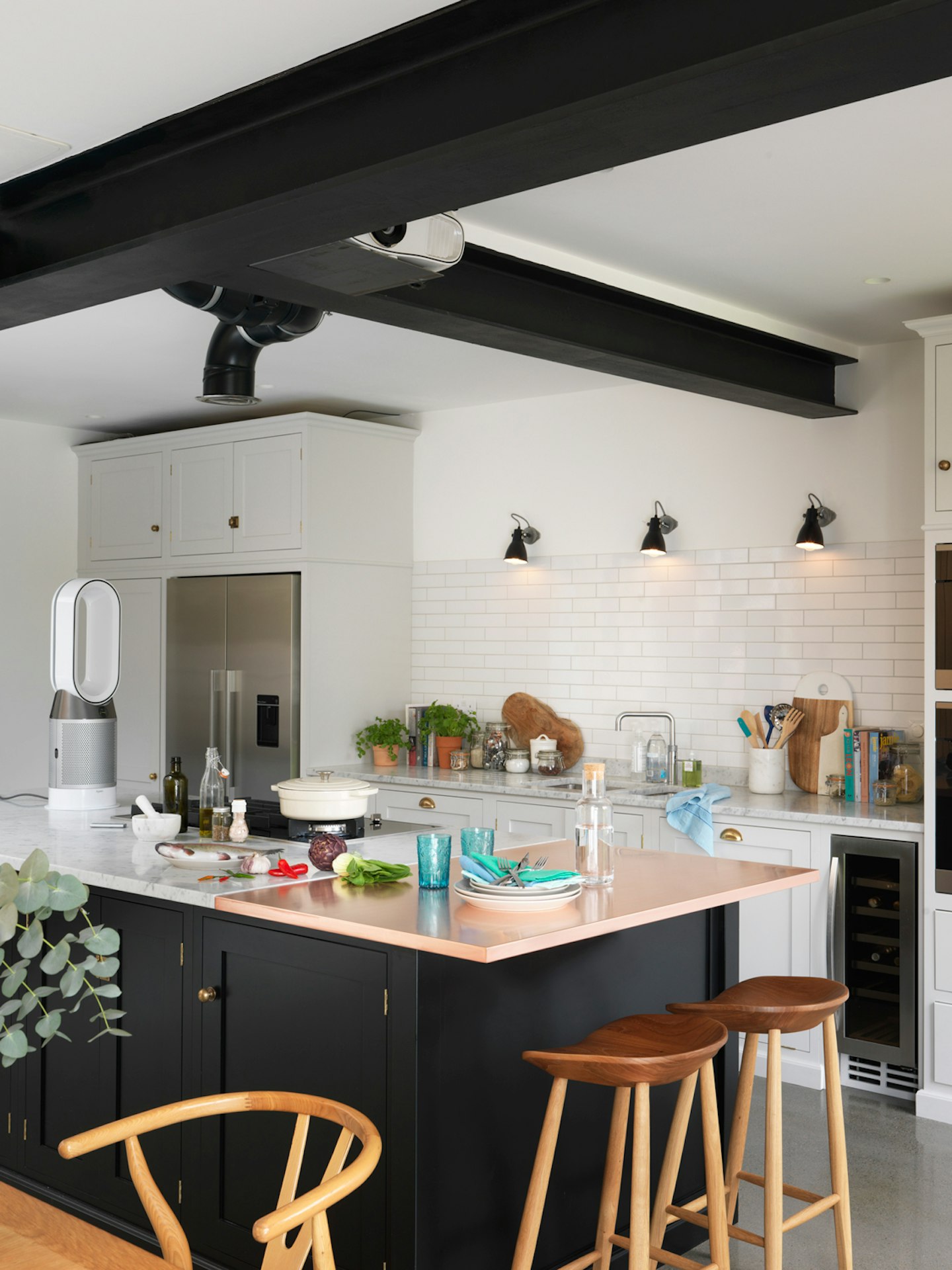Indoor air pollution isn't something that's discussed very often in mainstream media, but that doesn't mean that it's not important. Living in highly-polluted areas is becoming a really big issue in terms of air pollution - not just when we're outdoors, but when we're in our homes too. You may not realise it, but air pollutants are everywhere: from gases and odours produced by cooking hobs, to chemicals from air fresheners, hair sprays and cleaning products. In fact, indoor air pollution is so prevalent that there's now a dedicated Clean Air Day on 20th June that aims to tackle the issue of air pollution.
But don't fret: there is a way to minimise your exposure and contribution to indoor air pollution. Let us tell you how...

What Can I Do To Reduce Indoor Air Pollution?
It may feel like your home is a sanctuary away from pollution, but it's actually not. The average home can be up to 5x more polluted than outdoor air¹ - shocking, we know! Doing everyday things like cooking and cleaning may contribute to indoor air pollution, and even our furniture produces unwanted pollutants like dust particles and gases such as formaldehyde. Modern homes are becoming increasingly well sealed (what with the use of double glazing) but this actually contributes to trapping of all of that air pollution inside. On average, we spend 90% of our time indoors, which is why it's really important to make some super simple changes in your home that will help combat indoor air pollution.
Firstly, while cleaning to get rid of dust, bacteria and general dirt can help to remove indoor pollution, it's important to not be counter-productive by using cleaning products such as air fresheners or furniture sprays that may be full of unwanted chemicals. Instead, you can switch to using natural cleaning products to reduce the amount of chemicals and indoor airborne pollution in your home.
Other steps to take include trading in your regular paraffin candles for their eco-friendly soy counterparts, as these produce less soot when lit and burn much cleaner. Where possible, you can also try switching from using deodorant sprays to roll-ons, as the latter will reduce exposure to ultra fine particles emitted by sprays. Also, you may not realise it, but your shoes can also bring in all kinds of unwanted bacteria and pollution from the outdoors into your home. By opting to leave your footwear in the porch or on a shoe-rack when you come home, you'll be limiting the amount of air pollution you bring inside.
Another key thing to do is to invest in an indoor air purifier like Dyson's Pure Hot+Cool Advanced Technology purifying fan heater. The product's unique Air Multiplier™ technology projects up to 290 litres of purified air per second around a whole room.² As this purifier offers whole room purification, you can place it anywhere in your home to capture gases and 99.95% of microscopic allergens and pollutants³ that may otherwise get trapped in your home. For ease of use, you can connect the purifier to the Dyson Link app to review the air quality inside and outside your home in real time, as well as remotely control air flow speed, modes and timers. This clever home must-have also has a smart heater and cooling fan, plus built-in voice control to help make your life that little bit easier.

Alternatively, the Dyson Pure Cool Me™ purifying fan is the latest addition to Dyson’s purifier range and is ideal for small spaces. Similar to its big brother (the Dyson Pure Hot+Cool™), the Dyson Pure Cool Me™ captures gases and 99.95% of microscopic allergens and pollutants³. The slick-looking product also has a personal cooling fan, which is an added bonus when you’re feeling hot and stuffy, as it delivers a really precise stream of cooling air. Place it on your bedside table, in your home office or on your dressing table to purify your personal space.
While you're limiting the indoor air pollution in your house, you can also make a simple switch to reduce your contribution to outdoor air pollution. If you have a car, consider cutting down the number of days you drive to help combat the detrimental effects that pollution has on climate change. So whether it’s treating yourself to a new soy candle or cycling to work on a Tuesday, we can all do our bit!

Discover more about Dyson's air purifier offering, including the Dyson Pure Cool Me™ and the Dyson Pure Hot+Cool purifying fan heater. Find out more about indoor air pollution and what the Dyson purifiers can do for your home via the Dyson website or watch a live Dyson Demo in store at Oxford Street.
¹Hulin et al, Respiratory Health and Indoor air pollutants based on quantitative exposure assessments, European Respiratory Journal, October 2012.
²Tested for filtration efficiency (EN1822), air projection, purification coverage in a 81m³ room.
³As small as 0.1 microns. Tested for filtration efficiency at 0.1 microns (EN1822).
